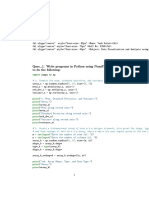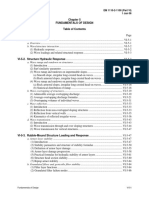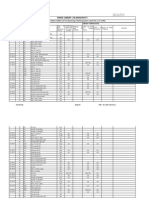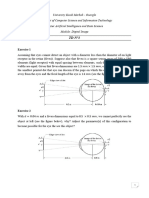0% found this document useful (0 votes)
7 views18 pagesFda Batch2program
The document consists of multiple Python code examples demonstrating various data manipulation and analysis techniques using libraries such as NumPy, Pandas, Matplotlib, and Scikit-learn. Key operations include array manipulation, statistical tests (Z-Test, T-Test, ANOVA), data visualization, and machine learning models (linear and logistic regression). Each example is accompanied by output results showcasing the functionality of the code.
Uploaded by
ragaspidyCopyright
© © All Rights Reserved
We take content rights seriously. If you suspect this is your content, claim it here.
Available Formats
Download as PDF, TXT or read online on Scribd
0% found this document useful (0 votes)
7 views18 pagesFda Batch2program
The document consists of multiple Python code examples demonstrating various data manipulation and analysis techniques using libraries such as NumPy, Pandas, Matplotlib, and Scikit-learn. Key operations include array manipulation, statistical tests (Z-Test, T-Test, ANOVA), data visualization, and machine learning models (linear and logistic regression). Each example is accompanied by output results showcasing the functionality of the code.
Uploaded by
ragaspidyCopyright
© © All Rights Reserved
We take content rights seriously. If you suspect this is your content, claim it here.
Available Formats
Download as PDF, TXT or read online on Scribd
/ 18
























































































